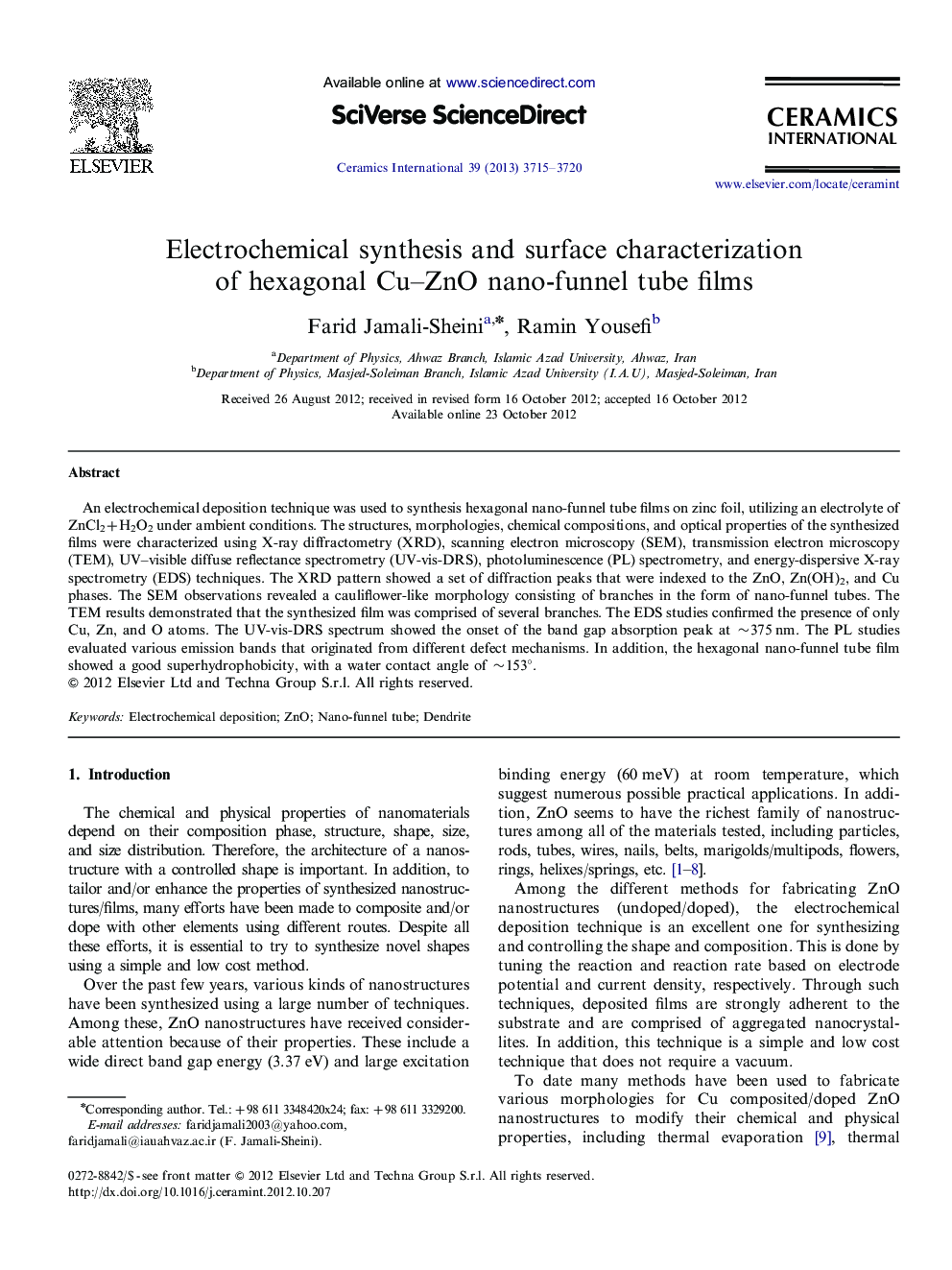| Article ID | Journal | Published Year | Pages | File Type |
|---|---|---|---|---|
| 1461736 | Ceramics International | 2013 | 6 Pages |
An electrochemical deposition technique was used to synthesis hexagonal nano-funnel tube films on zinc foil, utilizing an electrolyte of ZnCl2+H2O2 under ambient conditions. The structures, morphologies, chemical compositions, and optical properties of the synthesized films were characterized using X-ray diffractometry (XRD), scanning electron microscopy (SEM), transmission electron microscopy (TEM), UV–visible diffuse reflectance spectrometry (UV-vis-DRS), photoluminescence (PL) spectrometry, and energy-dispersive X-ray spectrometry (EDS) techniques. The XRD pattern showed a set of diffraction peaks that were indexed to the ZnO, Zn(OH)2, and Cu phases. The SEM observations revealed a cauliflower-like morphology consisting of branches in the form of nano-funnel tubes. The TEM results demonstrated that the synthesized film was comprised of several branches. The EDS studies confirmed the presence of only Cu, Zn, and O atoms. The UV-vis-DRS spectrum showed the onset of the band gap absorption peak at ∼375 nm. The PL studies evaluated various emission bands that originated from different defect mechanisms. In addition, the hexagonal nano-funnel tube film showed a good superhydrophobicity, with a water contact angle of ∼153°.
Graphical abstractFigure optionsDownload full-size imageDownload as PowerPoint slideHighlights► Large-scale Cu–ZnO nano-funnel tubes were synthesized by an electrochemical deposition technique. ► Key factor for obtaining funnel tube shape is use of specific voltage without electrolyte stirring. ► The results suggest the suitability of this material for device applications.
